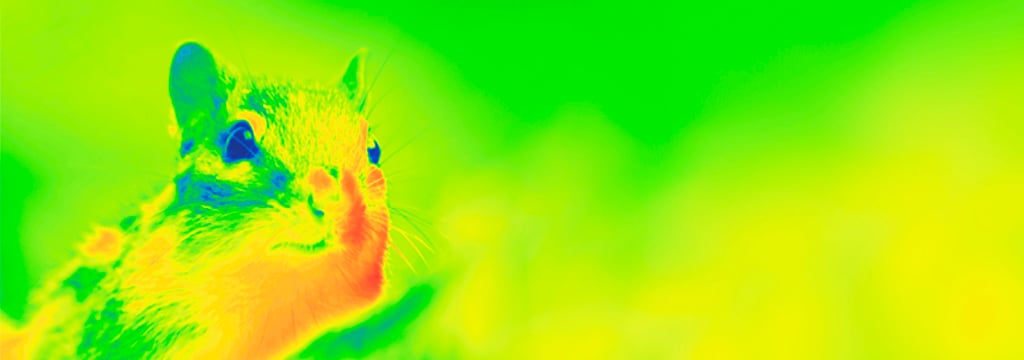Using thermal imaging to help animals in the wild: New literature review

A new literature review about using thermal imaging to help nonhuman animals explores how the technology is being increasingly used in various applications for the benefit of nonhuman animals.
Thermal imaging, the technology behind heat maps, can reveal information that is not visible to human eyes, and this relatively simple technology can give us detailed data in a large variety of contexts. You might have seen pictures showing humans as heat maps against a cooler background – that’s just one use of thermal imaging. It can also be used with hand-held devices to directly detect illness and inflammation, and it can detect temperature differences remotely.
How can this help animals living in the wild? Thermal cameras have been used to locate animals trapped after natural disasters, including animals who are buried under rubble or hiding in trees. The technology can be employed to find very small animals, animals who are hiding underground, and animals who are obscured from view by foliage. Thermal cameras can be attached to trees or placed in other permanent locations, or they can be attached to small drones that fly through areas that are hard for humans to reach.
You can download the report here:
The potential of thermal imaging to help animals in the wild: A literature review
How does it work? Thermal imaging uses infrared light to make objects that are warmer than their surroundings easier to see, so it can be used to detect any warm-blooded animal without disturbing them or altering their behavior. It creates a graphic representation of infrared radiation emanating from an object. Infrared radiation has longer wavelengths than visible light so it can pick up things that can’t be seen by the human eye. In addition to identifying location, temperature changes on the surface of an animal’s body can indicate illness, injury, or physiological stress triggered by fight or flight responses. Heat loss or gain or abnormal heat signatures can be detected by any infrared camera, but thermal cameras are more sensitive and pick up more detailed data.
What about moving animals? Thermal cameras can be used in combination with motion sensors. Motion sensors are triggered by movement, and together the two technologies can be used to create a heat map of an animal’s movement over time. This enables us to observe behavior and movement within habitats, as well as revealing sickness behaviors. It’s even possible to identify individual animals.
This new literature review explores these uses among many others and explains in detail how the technology is used in a variety of contexts and for a surprising number of purposes. It also highlights new ways thermal imaging can be used in the future, as well as identifying limitations to its use and describing how it give greater insights in combination with other technologies. Opportunities for further research are recommended.
This information can be valuable to scientists, policy makers, and anyone who wants to learn more about new and varied ways we can help animals in the wild. Please feel free to download and share this report.